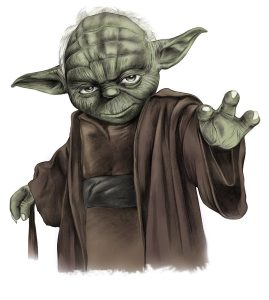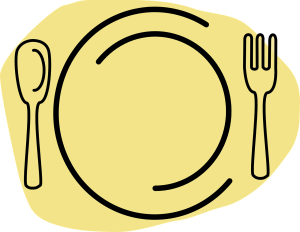What is translation?
Although translation is all around us – such as in the subtitles or dubbed shows that we watch on Netflix or on food packaging or in apps such as Google Translate, DeepL Translator or Microsoft Translator – many people don’t have a deep appreciation of what’s involved in translation. This is understandable since translation is a very specialized profession and it can take years of study and training to become an expert translator. But learning even a little bit about translation can help you to create texts that are more translation friendly. This means that your texts can be translated more easily and effectively and therefore be more useful to people who speak other languages.
 To better understand what’s involved in translation, it might help to begin by correcting some misperceptions. Unfortunately, popular science fiction shows, such as Star Trek or Doctor Who, often give the impression that translation is a very easy task that can be accomplished in seconds with almost no effort. In reality, translation is a lot more complicated! Another commonly held misperception is that translation is like code breaking and that in order to crack the code, a translator just has to substitute each word in one language with a word in another language. However, what translators actually do is focus on transferring the message or the ideas that are contained in the original text, rather than worrying about translating each individual word. Every language has a different way of structuring and presenting ideas, which is why word-for-word translation can often produce an unnatural sounding text. For instance, a word-for-word translation of the French phrase “la voiture rouge” into English would produce “the car red”. It’s possible to understand the meaning, but that is not the most natural way of phrasing the idea in English. For anyone who is a fan of Star Wars, this might remind you of the way that the character Yoda speaks. When he says “Ready are you?” or “Powerful you have become,” Yoda is using English words, but the way that he organizes them is likely based on the grammar of his native language. As sentences get longer and more complex, it becomes more and more difficult to produce meaningful literal or word-for-word translations. Therefore a translator’s job is to look beyond the individual words and to identify and extract the underlying meaning or message from the original text, and then to reformulate that message in a natural way using words from the target language. This why a phrase such as “Je m’appelle Nico” in French is usually translated into English as “My name is Nico”, rather than as the more literal option “I call myself Nico”, or why the French expression “Il pleut des cordes” (which literally means “It’s raining ropes”) is translated into English as “It’s raining cats and dogs”.
To better understand what’s involved in translation, it might help to begin by correcting some misperceptions. Unfortunately, popular science fiction shows, such as Star Trek or Doctor Who, often give the impression that translation is a very easy task that can be accomplished in seconds with almost no effort. In reality, translation is a lot more complicated! Another commonly held misperception is that translation is like code breaking and that in order to crack the code, a translator just has to substitute each word in one language with a word in another language. However, what translators actually do is focus on transferring the message or the ideas that are contained in the original text, rather than worrying about translating each individual word. Every language has a different way of structuring and presenting ideas, which is why word-for-word translation can often produce an unnatural sounding text. For instance, a word-for-word translation of the French phrase “la voiture rouge” into English would produce “the car red”. It’s possible to understand the meaning, but that is not the most natural way of phrasing the idea in English. For anyone who is a fan of Star Wars, this might remind you of the way that the character Yoda speaks. When he says “Ready are you?” or “Powerful you have become,” Yoda is using English words, but the way that he organizes them is likely based on the grammar of his native language. As sentences get longer and more complex, it becomes more and more difficult to produce meaningful literal or word-for-word translations. Therefore a translator’s job is to look beyond the individual words and to identify and extract the underlying meaning or message from the original text, and then to reformulate that message in a natural way using words from the target language. This why a phrase such as “Je m’appelle Nico” in French is usually translated into English as “My name is Nico”, rather than as the more literal option “I call myself Nico”, or why the French expression “Il pleut des cordes” (which literally means “It’s raining ropes”) is translated into English as “It’s raining cats and dogs”.
The importance of saying what you mean
So if translation is really about translating meaning, rather than about translating individual words, then it’s very important for writers to express the meaning in a clear and unambiguous way so that a translator can fully understand the intended message and can then find the best way to express that in another language. If the message is not clear in the original text, then the translator may end up misunderstanding it and telling the readers of the translated version something very different.
Example: Flying airplanes can be dangerous.
The translation will differ depending on how the translator interprets the unclear text.
- Meaning 1: Airplanes that are in the air can be dangerous. = Les avions volants peuvent être dangereux.
- Meaning 2: The act of flying airplanes can be dangerous. = Piloter des avions peut être dangereux.
 Problems can also be caused by homophones, which are words that have a similar sound but a different spelling and meaning. For instance, if you are working quickly, you might accidentally type “their” when you mean “there” (or “too” instead of “two”), and a spellchecker won’t catch this problem because they are both legitimate words. However, the equivalent words in French will be quite different (“là” vs “leur” or “aussi” vs “deux”). Sometimes even a seemingly small issue, such as a missing comma, can completely change the meaning of a sentence. Think of the difference between “Let’s eat, kids!” and “Let’s eat kids!”
Problems can also be caused by homophones, which are words that have a similar sound but a different spelling and meaning. For instance, if you are working quickly, you might accidentally type “their” when you mean “there” (or “too” instead of “two”), and a spellchecker won’t catch this problem because they are both legitimate words. However, the equivalent words in French will be quite different (“là” vs “leur” or “aussi” vs “deux”). Sometimes even a seemingly small issue, such as a missing comma, can completely change the meaning of a sentence. Think of the difference between “Let’s eat, kids!” and “Let’s eat kids!”
Punctuation matters! You may be thinking that a missing comma is really not such a big deal, but faulty punctuation can end up costing millions. Check out these cautionary tales to learn more:
Find out more
To learn more about what’s involved in translation, check out the open access introductory textbook De-mystifying translation: Introducing translation to non-translators.

